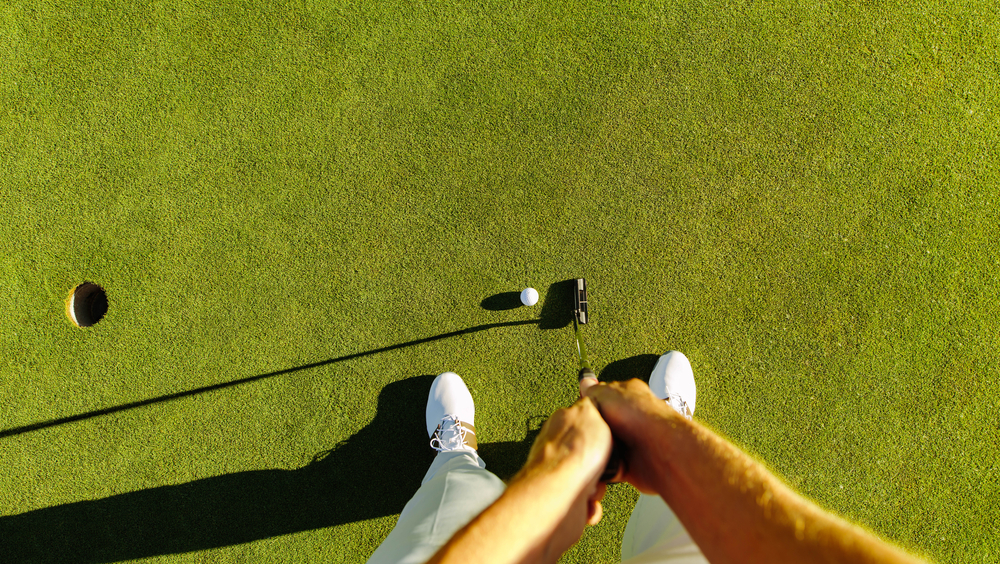How to improve your putting technique
The fastest way to shed strokes from your golf game is improving your putting technique

You won’t find a professional golf instructor anywhere who would argue with the trusty golf cliche: “Drive for show — putt for dough.” While big tee shots and soaring approaches might look great and feel satisfying, they all go for naught if you can’t sink that all-important five-foot putt for par.
The putter is the only club in the bag a golfer will need on every hole. In fact, a par score on every hole includes the assumption that the player will need two putts on every hole to find the bottom of the cup. Famous golf coach Hank Haney often tells his students there are three keys to good golf: Keep the drive inbounds, take one shot on your approach to the green, and finish with the expected two putts.
Unlike any other element of golf, putting demands its own unique set of skills, and improving your putting technique requires patience, commitment and proper technique. Here, you’ll find everything you need to know to get a start on that process.
Looking for the best golf gear to wear as you hit the green? We've found the best golf shoes and the best golf gloves to tee off with here. If you're after more golfing advice, here's how to calculate your handicap.
Putting Philosophy
Too many average golfers make the mistake of trying to make all of their putts. Inside of a certain distance, that might be a reasonable expectation. But in most cases, the mid-handicap golfer should work to eliminate the dreaded three-putt green that pushes a par to a double bogey or a round in the 80s to a round closer to 100.
It’s more reasonable for that aspirational golfer to imagine a hula hoop, bushel basket or frisbee around the hole (depending on confidence and competence). If the player can put the first putt inside that circle, he or she ends up with an easier tap-in for a livable bogey or par.
How to improve your putting technique — the basics
Like any other shot in golf, it helps if a player creates a routine when putting. Reliable golf performance demands minimal variation.
Sign up to get the BEST of Tom's Guide direct to your inbox.
Get instant access to breaking news, the hottest reviews, great deals and helpful tips.
Mike Vance, PGA teaching professional, insists there’s nothing in swinging a driver or lifting the ball off the fairway with an iron that can prepare a golfer for putting.
“It’s an entirely different skill set,” Vance says. “The player has to separate putting from the other portions of his or her game and work on with a different routine.”
Vance reminds any player that golf is a sport of stillness and patience. He stresses taking time on a green to read the putting service before rushing into any putt from any distance. How wet or dry is the putting surface? Are there any small obstacles or ball marks in the way? Does the green slope up or down? Does it break left or right?
Once the read is complete, the player must focus on applying the appropriate force and speed to the putting stroke while moving the putter straight back and smoothly forward.
“The putting motion should flow from the shoulders,” Vance adds. “The wrists and arms should remain relaxed. It’s best to follow through smoothly and not pop at the ball.”
With those fundamentals in place, the golfer can apply distance-related strategy to improve putting techniques.
How to improve your putting technique at a distance
Long-distance, or lag putting, means the ball is on the green or just off its edge, but is too far away to expect to make the putt. In some cases, the putt can be 10 yards or more away from home. The goal here is to get the ball within a makeable distance to avoid a three putt situation.
We turn to tour legend and World Golf Hall of Fame Member Greg Norman for a great tip here. When offering on the spot advice for players looking to improve their lag putting, he invites them to engage their spatial awareness.
To practice this, Norman urges players to set golf balls at varied, but extensive distance from the cup — farther away than they’re comfortable putting. He wants the player to ‘take a read’ on the putt and use a typical stance and grip on the putter — before closing his or her eyes. Then, Norman encourages the golfer to imagine the putt and take a shot at it based on feel alone.
Then, once the eyes are open again and the result clear, the golfer should repeat the process until mental and visual expectation meet proper execution.

How to improve your mid-range putting technique
Inside the distance of a lag putt, but still unlikely to go in easily, the midrange putt must end up cup-side to fend off a three putt. Again, it all comes down to a successful read and execution at the proper speed.
Vance offers another key tip. Too often, when a golfer mis-hits a midrange putt, only to see the ball roll more than a couple feet from the cup, he or she will wince, curse or otherwise avert the eyes out of frustration.
“Avoid that reaction,” Vance says. “Watch the ball until it stops to help you read the recovery putt so you don’t miss the comeback.”
How to improve your putting technique during short putts
There is nothing more unsettling in a golf round than missing a putt that seemed unmissable. A short putt is any distance three feet or less. It seems impossible to miss such a tap-in, but — even at that distance — greens can have breaks in them or a slope. A cocky player can also push an easy one past the hole if he or she rushes.
To avoid such a needless error, take the same amount of time over short putts as you would for a long try. Imagine an easy path to the bottom of the cup and make sure to stroke through the ball with confidence. Nothing kills a short putt faster than trying to get cute and nudge the ball.
Be confident. Pick your spot. Put it away.
John Scott Lewinski hustles around the world, writing for a network of publications recording a monthly readership of more than 300 million people. He covers lifestyle, travel, golf, cars, technology and hard news. As an author, he is represented by the Fineprint Literary Agency, New York.

